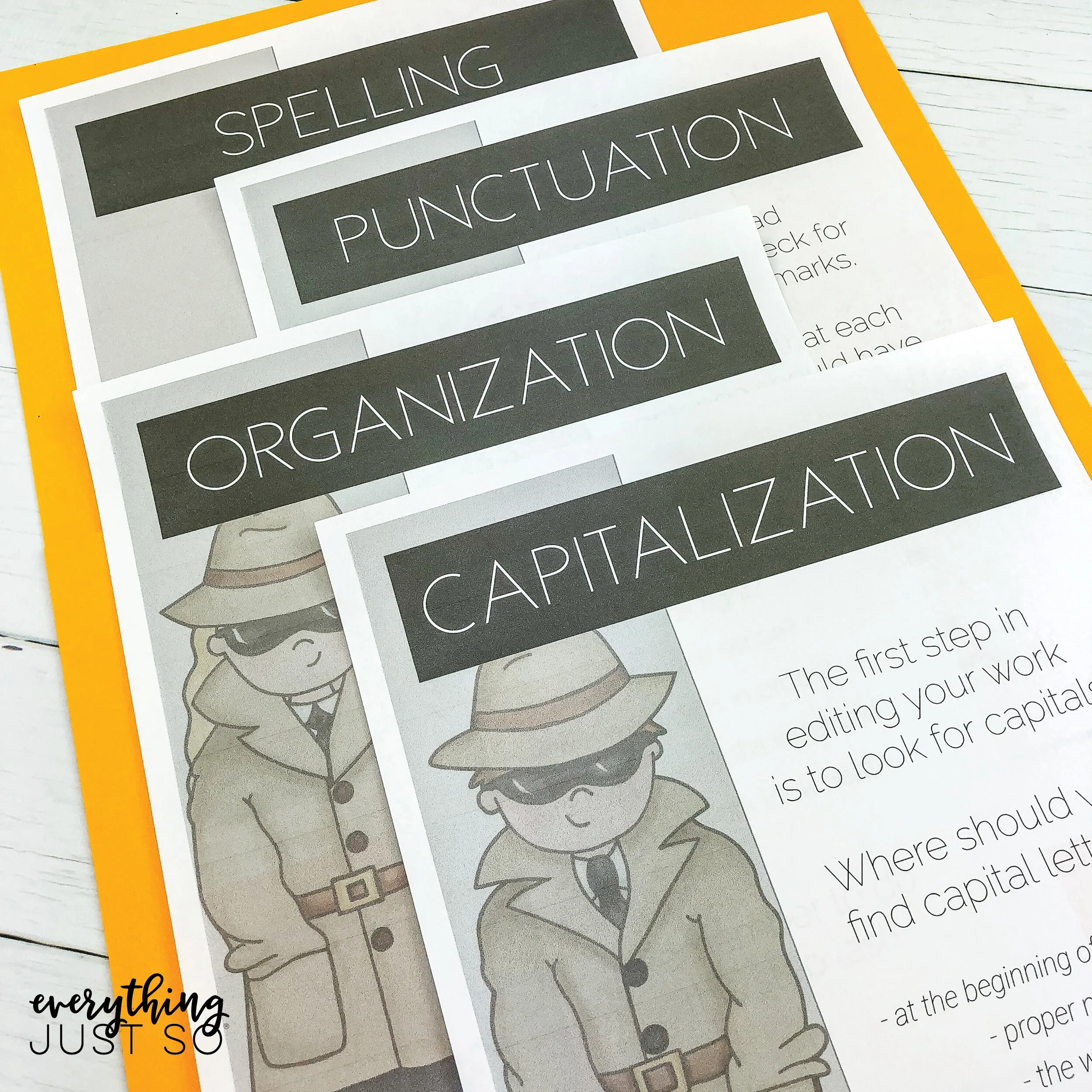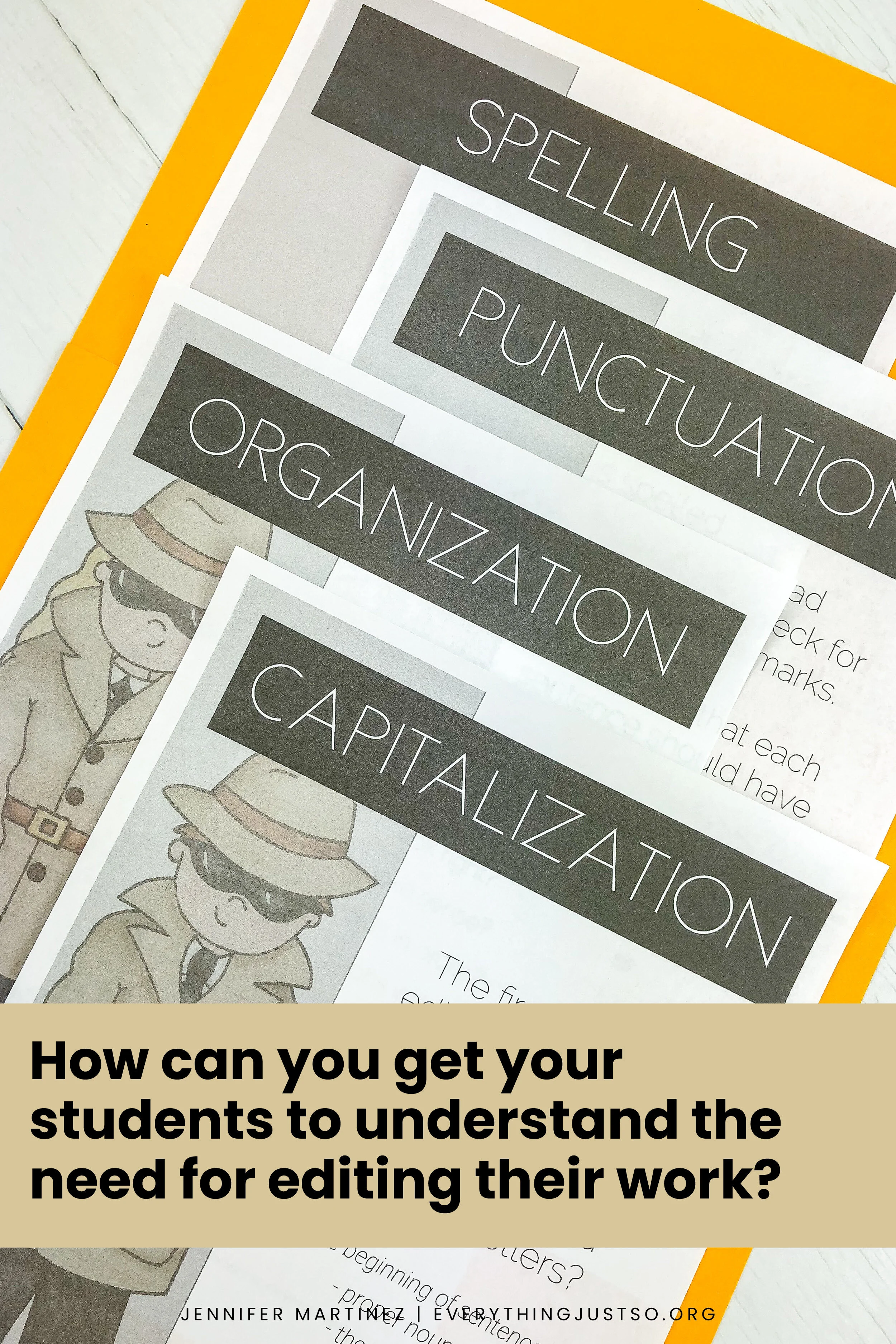How to Build Students’ Writing and Spelling Independence
Teaching writing is challenging. So many students come to the classroom as reluctant or struggling writers. Writing intimidates students - there are so many different things they need to get right in order to feel successful. As a teacher, your goal is for your students to gain confidence and competence as writers - and to work toward independence.
So how do you take beginning of the year writers who ask endless questions because they are afraid of being wrong and turn them into independent writers who produce quality work?
It’s all about following a solid process and providing them with tools to help them succeed.
You no doubt have a writing program you follow that focuses on the process of creating various types of writing. Today I’m going to talk to you about some tools that can accompany any writing program. Your students can use these tools to gain independence in writing and spelling.
Transform your students into editors by using COPS
Convincing students that a first draft is not a final draft isn’t easy. Part of turning them into confident, independent writers is giving them the tools they need to edit their own work.
It’s time to send them to COPS training.
COPS is a simple way to teach your students how to edit their own writing. My first experience with this method was when I had my students use it to check their dictation sentences on spelling tests. When I saw how much they enjoyed it - and how easy it was for them to put into practice - I was hooked. And so were they! We started using COPS on all of our writing assignments.
I saw my students grow in skill and confidence as writers.
COPS is an easy to remember acronym that stands for:
C - Capitalization. Students check for proper capitalization at the beginning of sentences as well as proper nouns, titles, and the word “I.”
O - Organization. Students read through their writing and ask themselves a series of questions:
Are the words in the correct order?
Does this sentence make sense?
Is my writing well-organized?
Does my work look neat?
P - Punctuation. In addition to making sure each sentence has an end mark, students check for commas, apostrophes, and any other necessary punctuation marks.
S - Spelling. Students look over each word and check for correct spelling. They use their tools when needed.
I found this method to be so effective and successful in my classroom that I developed a resource that’s available in my TPT store. It has everything you need to start using COPS in your classroom. You’ll be amazed by how quickly your students will learn the steps and start using them… independently!
My COPS resource includes:
Teacher Directions - all you need to know to start using COPS with your students.
Posters - hang them around your room to remind students of each step.
Bookmarks - laminate and give them to students to encourage independence.
Checklists - students use them while editing and turn in with ready-to-publish work.
“Slow Down!” tickets - attach to student work that has not been edited.
Try the COPS editing method with your students and watch their writing improve and their confidence and independence grow.
Make Spelling Fluency practice part of your routine
Nothing stops student writers in their tracks faster than not knowing how to spell a word they want to use. The English language is made up of so many words that follow so many different spelling rules. And then of course there are the words that don’t follow the rules at all. It’s no wonder you’re constantly being asked, “How do you spell… ?”
Your students need a method for learning words that break the rules and words that follow rules they’ve yet to learn, especially high frequency words.
Students who achieve automaticity with sight word spelling write with more skill and confidence. They are able to pull from a larger vocabulary of words as they write, making their writing stronger and more detailed.
How can you help your students reach this level of spelling accuracy? I found a practice within Orton Gillingham to be incredibly effective for my students. A multisensory practice, Spelling Fluency engages multiple parts of the brain, allowing students to make stronger connections and experience learning more deeply.
Ready to try Spelling Fluency practice with your students? Click here to learn more about how you can put it to work in your classroom with little to no ongoing time and effort from you!
I have a resource in my TPT store that has everything you need to get started with Spelling Fluency right away! Spelling Fluency and this kit can be used with any reading and spelling program.
Introduce personalized spelling dictionaries
Helping students gain independence as writers and spellers means giving them the right tools. One of my favorite tools to use with my students is personalized spelling dictionaries.
These go-to references not only replace bulky children’s dictionaries, they make your role as “teacher as dictionary” almost obsolete.
So what is a personal spelling dictionary? It’s a student’s own copy of sight words and other words they use often in their writing. Students add to their lists throughout the year and are accountable for the words they learn.
Ready to try personalized spelling dictionaries in your classroom? I created two personal spelling resources - one for K-2nd grades and one for 3rd-6th grades. These resources come in two formats - printed or digital. If you anticipate virtual instruction being part of your year, the digital version is a great solution.
My favorite thing about this resource is that it can be used with any spelling curriculum or program. That’s by design!
Learn more about how to use personalized spelling dictionaries in your classroom.
Closing note…
Your students are full of creative ideas and opinions they love to share. Getting them to write those ideas and opinions confidently and independently is a journey. Arm them with the right tools and strategies as they travel the road toward independence.
Are you making time for self-care and rest? Look for ways to organize, plan, and simplify in order to lessen your load. Need help? I support teachers just like you with courses, resources, tips, and strategies that help you achieve balance. Check out my collection of blog posts and resources.
Click the image below to save these ideas for later:



